My season last year finished abruptly before October could grab a hold, a realisation that all decent pond activity had ceased and Odo’s were becoming lucky discoveries or hard sought individuals pretty much decided things. This year I made a mental note to quit when it was time to quit but not too soon just in case.
Lousy weather and other unforseen circumstances prevented me from going out again until Saturday, Sue & I taking advantage of a sunny day to visit the pond a week on, as good a barometer as any to give a glimpse of things.
We must’ve had a lot of rain during the week as the ground was saturated. Satellite pools were replenished to provide the Common Darters with other ovipositing options, but our main focus was the main pond where we bumped into Phil Lord, a nice surprise being the first time we’ve crossed paths this season.
Phil was busy watching a hawker battle offshore towards the island, presumably a couple of Southerns but too far away to confirm for sure.
More Common Darters, single and in tandem, danced across the water and the occasional Black Darter popped up from the sanctuary of the island. A few Emerald Damsels frugally decorated the island margins with the odd one venturing further.
It must’ve been half-an-hour since we’d seen a hawker, a wait rewarded with the first appearance of the male Common, taking his usual path up & down the back channel. His visit was brief; enough for a couple of circuits before encountering the Southern, both flying off in battle with only the Southern returning to his patch.
The Southern’s patch was a small circuit around the small gorse bush on the eastern edge, and the lack of photo opportunities so far drew me over for some in-flight practice.
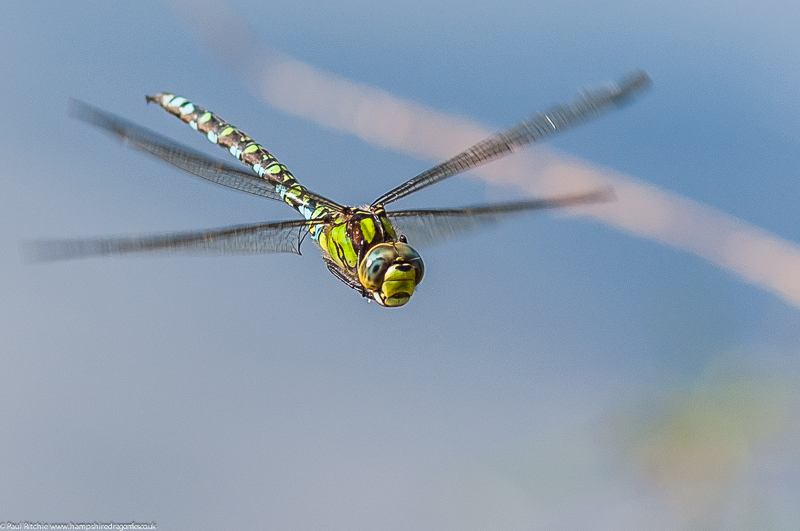
We were soon joined by Paul Winters, fresh from a visit to Badminston where he found another late Red-veined Darter. The Odo’s were in danger of being outnumbered by enthusiasts, but they held their own with almost continual patrolling by a couple of Southerns and sporadic appearances of the four other species present today.
Another highlight came with a visit by the female Common Hawker. She chose to oviposit at the base of the gorse bush, a place she’d used before. I’m presuming, like the male, this is the same resident individual who’s been present for a month now?
The male is certainly showing signs of wear & tear through many battles with the Southerns, enough to hear him arrive before you saw him.
Reluctant to leave the pond in case I missed a visit, I felt the large area of gorse deserved a look. No sooner had I started I saw a male Southern Hawker rise up and settle not to far away. While I was busy stalking this fellow a Black Darter stole my attention.
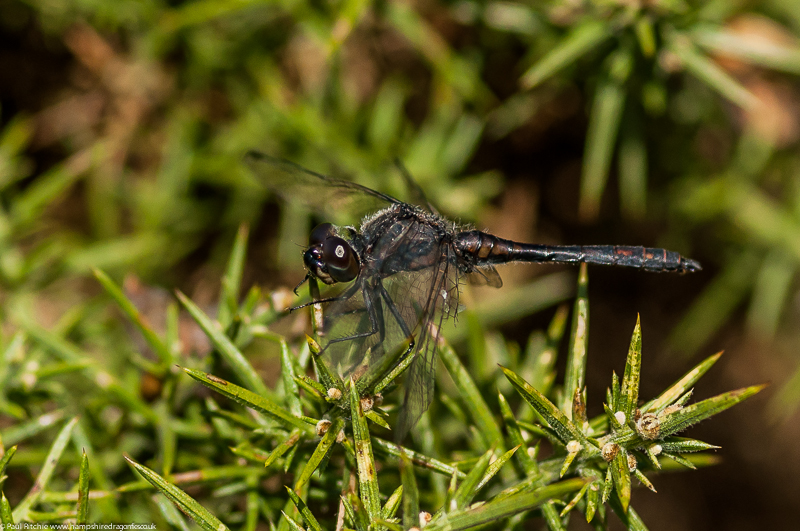
Having given him his photo opportunity I continued around the bush in search of the Southern and found him stark against some brown gorse. A very fresh-looking individual.
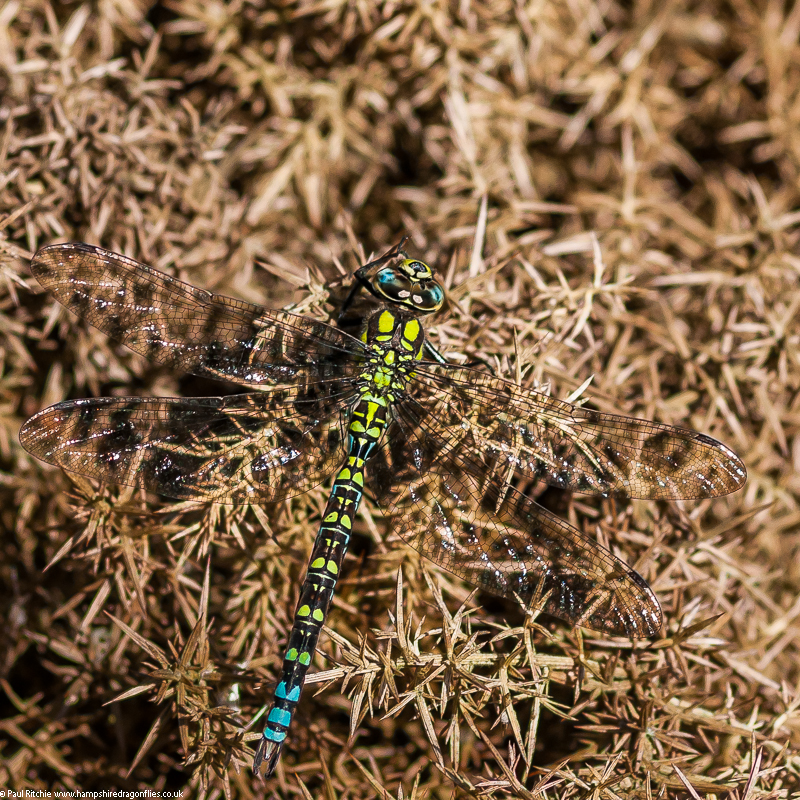
You can be as skillful as your level of experience will allow when approaching your subject and I knew I was doing everything right until my foot kicked the base of the bush and put pay to getting a better angle!
So it was back to the bush to play with the patrolling Southerns – there were at least 2 individuals choosing the same territory to patrol and choosing the bush as a perch to feed. This one caught, perched and ate his prey 4 times in 15 minutes.
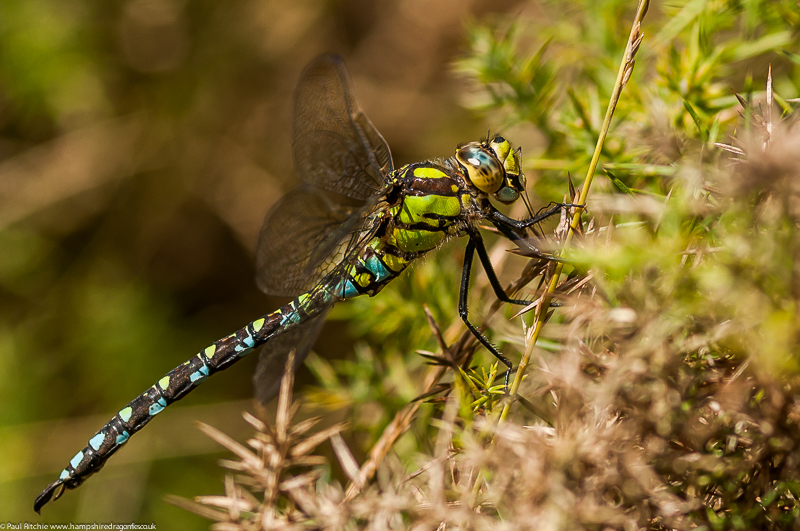
By now the Common Darters had ceased flying and just when you thought that was it for the day in would come the male Common Hawker, seemingly from nowhere, to do that quick circuit of his before picking a fight with a Southern.
The female Common Hawker also returned, frustratingly keeping her distance and covering a wide area looking for a peaceful spot, but the combination of other hawkers getting in the way and quite possibly our presence meant she was always one step ahead, finally dropping into the marshy shallows just out of sight on the edge of the island.
The male also appeared and after another clash dropped down into the same hollow as the female, but neither made contact. The excitement of knowing they were both perched low barely 3 metres away kept us occupied, hoping for a better glimpse.
We did get another glimpse of the female as she rose and flew west towards the trees while we had to walk back north to the cars. Still just enough time for another Southern in-flighter though…
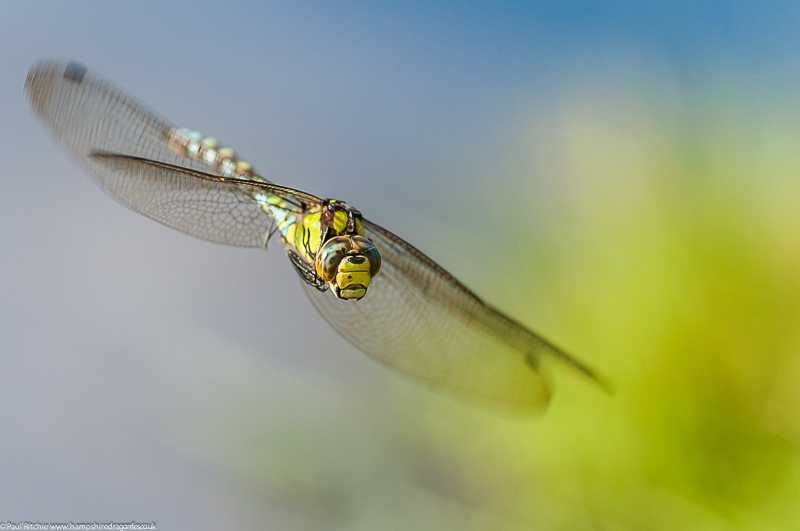
Witnessing this pair of Common Hawkers this past month and hearing or reading differing and mostly vague reports of longevity has got me thinking. I’m sure the technology must exist to tag individuals with tracking microchips? They do it with birds, why not insects?
Wouldn’t it be wonderful to know how long an individual or indeed a particular species live? How large an area does one individual cover? Does a male or female have a favourite body of water or do they have several?
To have a record of their travels from emergence is certainly an area which I’d be very interested in getting involved with.
